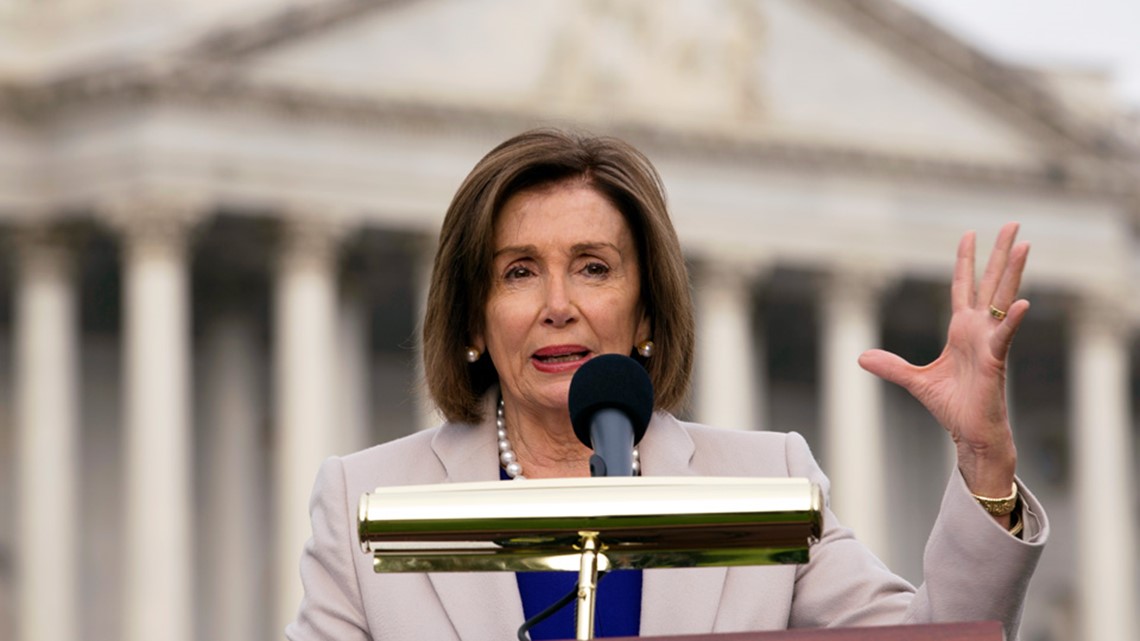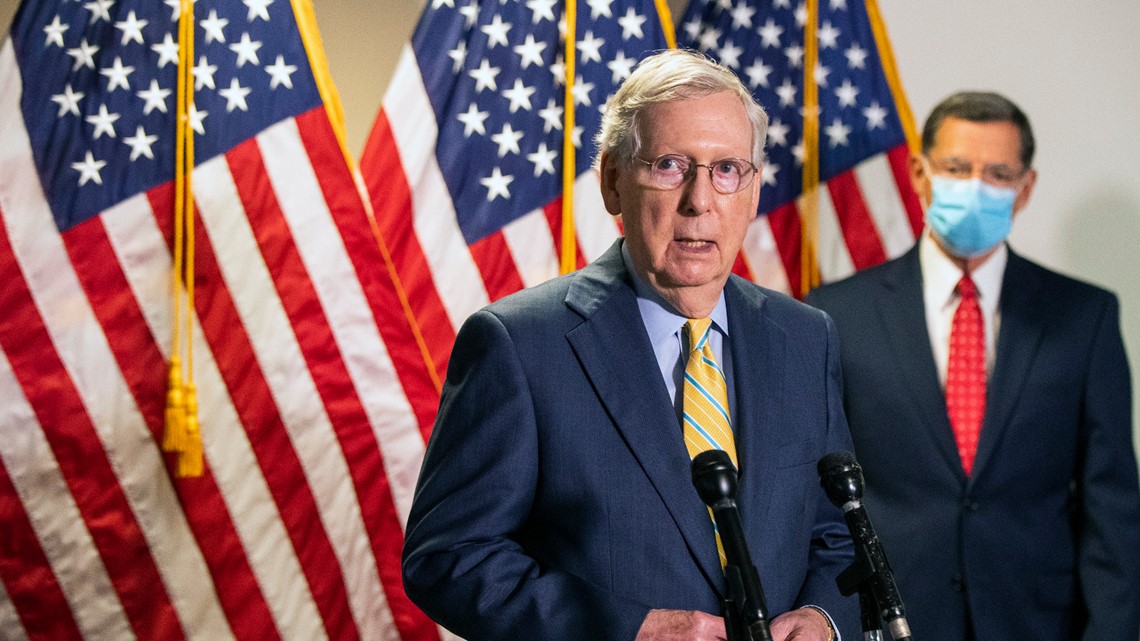Who are the senators and representatives in Congress who lead both parties, and what are their jobs?
House of Representatives
As explained by the House of Representatives website, the members of the majority and minority parties meet separately to select their leaders at the start of each Congress. Third parties rarely have enough members to designate a leader and independents usually join with the Democrats or Republicans to receive committee assignments.
Rep. Nancy Pelosi, D-Calif.
- Speaker of the House
The speaker is elected by the entire House at the start of each Congress and acts as the leader of the chamber. Even though there is a separate House majority leader, Pelosi is still the leader of the Democrats just as her predecessor, Rep. Paul Ryan, was the leader of the Republicans when he was the speaker. The speaker is also second in line to succeed the president, after the vice president.


Rep. Steny Hoyer, D-Md.
- House Majority Leader
This is the majority leader in charge of scheduling legislation, planning legislative agendas and consulting with members to gauge party sentiment, according to the House of Representatives.
Rep. Kevin McCarthy, R-Calif.
- House Minority Leader
The minority leader is the most powerful person in the party opposite the speaker. In this case, McCarthy is more the Republicans' version of Pelosi than he is Hoyer. But, his duties remain similar to the majority leader.
Rep. James Clyburn, D-SC
- House Majority Whip
Rep. Steve Scalise, R-La.
- House Minority Whip
The party whip assists the party leadership in managing the party's legislative program on the House floor. This person mobilizes party members for important measures for upcoming votes. The House of Representatives says the term comes from Great Britain in the 18th century.
"The term derives from fox hunting, where the 'whipper in' is the person in charge of keeping the pack of foxhounds together," the House website says.
Rep. Ben Ray Lujan, D-NM
- Assistant Speaker
Because Pelosi is House Speaker, the Democrats get one additional leadership spot. This position was initially the assistant majority leader, but Pelosi sought a title change for Lujan which was unanimously approved by House Democrats, according to The Hill.
Rep. Liz Cheney, R-Wis.
- Republican Conference Chair
Rep. Hakeem Jeffries, D-NY
- Democratic Caucus Chair
The conference and caucus chairs preside over conference meetings involving all members of their party. They meet weekly to discuss party policy.
Rep. Gary Palmer, R-Ala.
- Republican Policy Committee Chair
As described by Republicans, "The House Republican Policy Committee is the principal forum for the development of forward-looking and principled policy solutions. Established in 1949 by the House Republican Conference, the RPC is a place for Republicans in the House to generate quality legislative proposals."
Senate
While the speaker is the clear leader in the House, the leadership structure of the Senate is a bit more nuanced.
Vice President Mike Pence
- President of the Senate
The Senate president serves as the deciding vote in case there is a 50-50 tie on measures that do not require a supermajority. The vice president's role used to primarily be to preside over the Senate. Vice President Lyndon Johnson changed that in 1961, moving his main office to the White House and taking part in Senate functions only when necessary.
Sen. Chuck Grassley, R-Iowa
- President Pro Tempore
The president pro tempore presides over the Senate when the vice president is absent. This is also the person third in the line of presidential succession after the vice president and House speaker.
Sen. Mitch McConnell, R-Ky
- Senate Majority Leader
Sen. Chuck Schumer, D-NY
- Senate Minority Leader
From the Senate website:
"The leaders serve as spokespersons for their party's positions on issues. The majority leader schedules the daily legislative program and fashions the unanimous consent agreements that govern the time for debate."
"Working with the committee chairs and ranking members, the majority leader schedules business on the floor by calling bills from the calendar and keeps members advised about the daily legislative program. In consultation with the minority leader, the majority leader fashions unanimous consent agreements by which the Senate limits the amount of time for debate and divides that time between the parties."


Sen. John Thune, R-SD
- Senate Majority Whip
Sen. Dick Durbin, D-IL
- Senate Minority Whip
Similar to the roles held by the House whip, this person mobilizes party members for important measures for upcoming votes.
Sen. John Barrasso, R-Wy
- Republican Conference Chair
Sen. Patty Murray, D-Wash.
- Assistant Democratic Leader
Sen. Roy Blunt, R-Mo
- Republican Policy Committee Chair
Sen. Joni Ernst, R-Iowa
- Senate Republican Conference Vice-chair
Sen. Todd Young, R-Ind.
- Republican Senatorial Committee Chair
Sen. Debbie Stabenow, D-Mich.
- Democratic Policy & Communications Committee Chair
Sen. Elizabeth Warren, D-Mas
Sen. Mark Warner, D-Va.
- Democratic Conference Vice-chairs
Sen. Amy Klobuchar, D-MN
- Steering Committee Chair
Sen. Bernie Sanders, I-Vt.
- Outreach Chair
Sen. Joe Manchin, D-WV
- Policy & Communications Committee Vice-chair
Sen. Tammy Baldwin, D-Wis.
- Secretary of the Conference
Chris Van Hollen, D-Md.
- Campaign Committee Chairman

